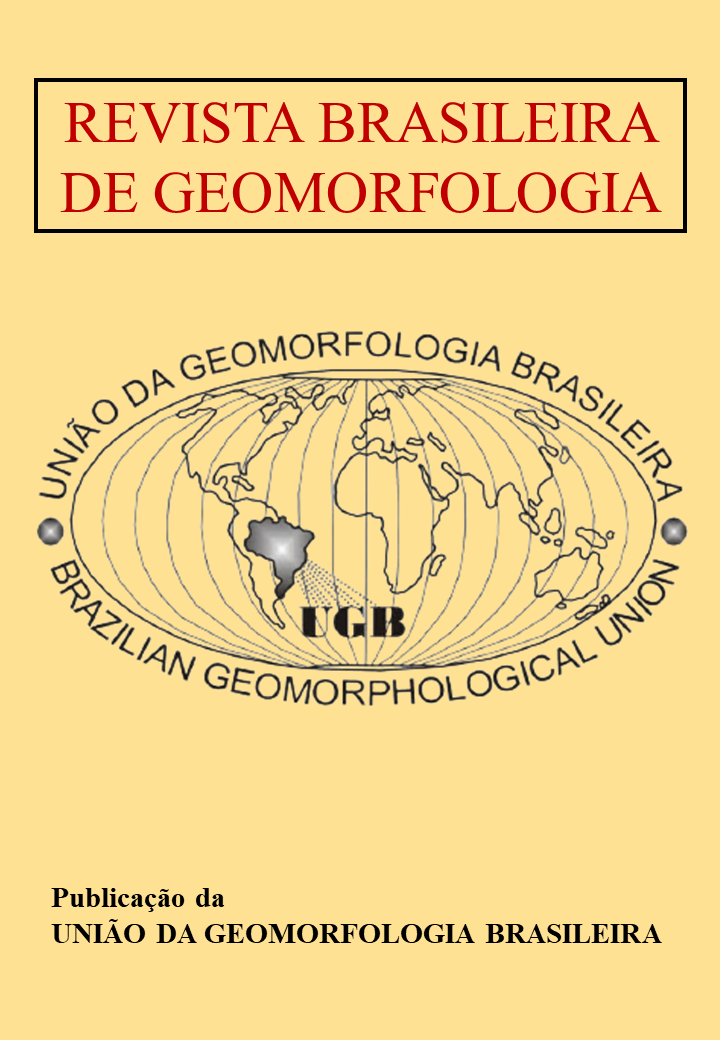River geometry responses resulting from hydrological changes in a partially urbanized watershed: an experimental study in Southern Brazil
DOI:
https://doi.org/10.20502/rbg.v26i3.2643Keywords:
Fluvial morphometry, Urban rivers, Impervious, Hydraulic geometryAbstract
: Impervious surfaces resulting from urbanization can increase peak flow magnitudes and affect the physical integrity of rivers, leading to alterations in channel morphometric parameters. This study investigates the relationship between cross-sectional morphometry and both drainage area size and the proportion of impervious surfaces. Ten cross-sections were analyzed within the Maringá Stream watershed, located in southern Brazil. This watershed, the largest in the municipality of Maringá (~90 km²), encompasses both urban and rural drainage areas. Morphometric parameters were obtained through field surveys, and geoprocessing techniques were employed to quantify drainage area size and impervious surface ratio. Significant univariate relationships were identified only between the width-to-depth ratio and depth, respectively, with drainage area size and impervious surface ratio. Multiple regression analysis demonstrated that width, channel capacity, and hydraulic radius had statistically significant coefficients with both explanatory variables. The findings suggest that the impervious surface ratio strongly influences fluvial morphometry, although hydraulic geometry is primarily governed by the combined effects of urbanization and drainage area size.
Downloads
Downloads
Published
How to Cite
Issue
Section
License

This work is licensed under a Creative Commons Attribution-NonCommercial 4.0 International License.
Author (s) retain copyright and grant the journal right of first publication with the work simultaneously licensed under the Creative Commons Attribution License that allows sharing the work with recognition of its initial publication in this journal.








